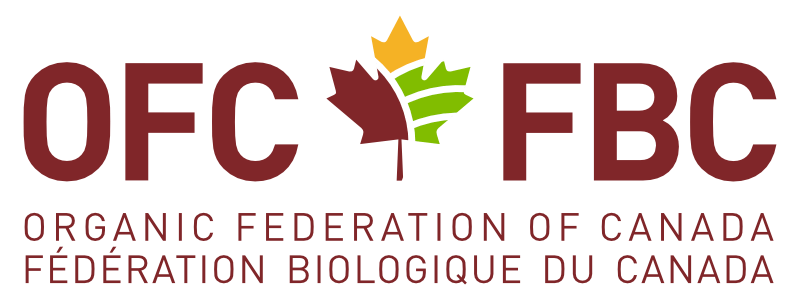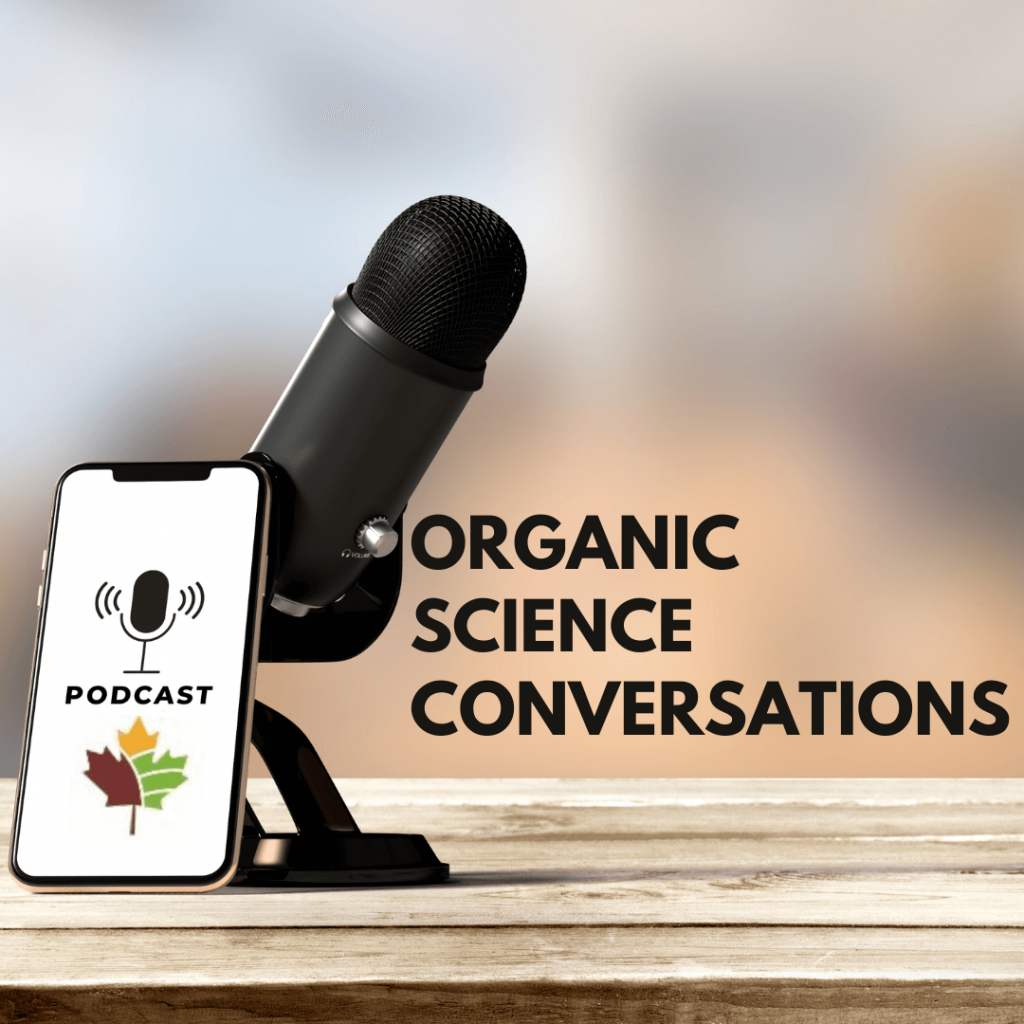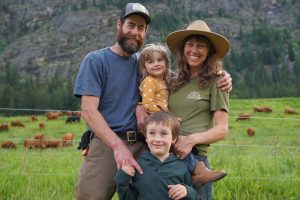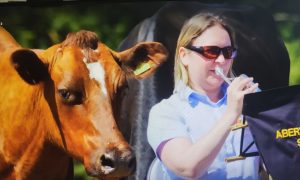Summary
Armed with patience and a talent for fortune telling, Dr. Jennifer Mitchell Fetch describes how, over 17 years of work, she has created two new oat cultivars selected to thrive under organic management: AAC Oravena and AAC Kongsore.
Download the interview with Dr. Jennifer Mitchell Fetch in PDF format.
When organic producers expressed their concerns that every oat cultivar registered for commercial production in Canada had been developed under the conventional management, Dr. Jennifer Mitchell Fetch decided to address their concerns. She started her work in 2003 at the University of Manitoba and trials continue at the Glenlea Research Station Project.
Seventeen years later, two organic cultivars have been registered. AAC Oravena and AAC Kongsore are licenced to Grain Millers, a milling company in Saskatchewan. Dr. Mitchell Fetch has crafted these cultivars under the Organic Science Clusters 1, 2 and 3.
My name is Nicole Boudreau from the Organic Federation of Canada, I am so pleased to interview Dr. Jennifer Mitchell Fetch, our veteran organic cluster researcher.
Bonjour Jennifer.
Hello, Bonjour Nicole, how are you?
Fine. Jennifer you have a vast experience in plant breeding, but when I hear that it takes from 10 to 13 years to develop and register a variety, and even more for the production of certified seeds [note certified seed production is separate from certified organic production]. I cannot imagine how patient you need to be. What are the qualities of a competent breeder? Is it patience?
Patience is a very big part of it because you can’t control the weather or the length of the season, and the crop has to grow for three to four months in the fields. You have to wait for it to grow before you can see what the results will be. Maybe, you have to have a bit of a crystal ball or be able to tell fortunes because you need to know 16 years ahead of time what the farmers or the environment or the milling industry or the consumers are going to want down the road. You have to try to stay ahead of all of that; patience and fortune-telling is maybe part of it.
Well this is a nice explanation and I think patience is needed. As you said, how long does it take, 15 years, before you can see what your cultivar produces?
At least 13 to 15 years, maybe 16 or 17 years, depending on how long the certified seed production takes. With Oravena, the first one we developed, and the first organic cultivar in Canada, nobody knew how to handle that one. It’s taken a lot of learning to figure out how to produce the certified seed.
You are a traditional breeder, not using any genetic engineering to develop a new organic trait. How are you conducting the breeding?
We select parents that we think will perform well under our organic management. We can make some selection for better parents, because we’ve got several years of testing these breeding lines under organic management. We’re taking notes and we’re making crosses, specifically AAC Oravena and AAC Kongsore, to see if we can improve their traits and make them better performers for the producers and for the milling industry.
We take the pollen from the male parent and dust it on the female parts of the female plant. We cross our fingers and hope we get seed produced out of that crop. Then there’s several generations that we have to grow to test those lines, the babies from that crop, to see how they perform.
Now, that’s another trait of the breeder: you have to be willing to throw away the babies if they don’t meet the mark or do what you are expecting they should have done. You can only carry forward the best. So, as a breeder, you throw away a lot of your babies.
We are doing some molecular marker work that includes the organic breeding material, but that’s not genetic engineering. We’re just using DNA markers to identify the specific genes that we hope are in the progeny. This means, we don’t necessarily have to test [all the generations] in the field, we can test them in the early generations from F1 to F14/15 to make sure they have those genes present [as indicated by] those molecular markers.
Jennifer, what specific traits do you want to develop in the organic cultivars?
Well, we want to have a line that gets out of the ground quickly. That’s the first real breeding focus I had with the organic line–to have large seeds because I thought they might have another advantage to outcompete the weeds if they could get a good jump on the growing season and if they could have lots of resources in the seed to support a bigger more vigorous plant. We’re also looking at the disease resistance, particularly resistance to crown rust, stem rust and smut and especially FHB (fusarium head blight). Because organic farmers have limited protection or capabilities to combat diseases, we focus on the genetic resistance for disease. And we’re looking at the milling quality traits. Any improvement we can make like a lower oil level, higher beta glucan levels and higher protein levels is really critical for a milling oat cultivator.
Where are you conducting your research?
We are mostly doing the screening of our organic material in collaboration with the University of Manitoba. They have certified organic land south of Winnipeg at Glenlea Research Station as part of the Glenlea Long Term Crop Rotation Study. We do some testing of material under conventional management as well, just to get more data and test uniformity of performance across different environments. We do that at Brandon and Lacombe, Alberta.
Do you always conduct trials in the same type of soil, under the same management?
You can’t always do that. We have the site at University of Manitoba and we’re also conducting our advance trials under contract management with several groups around Western Canada, who have land that is organic, or they don’t add any nutrients to the plot land before our trials. So, we’re getting similar management to what our organic farmers would get.
We’re testing all across Western Canada, so there are some differences in the soil type. We do a lot of our testing under organic management on the Dark Brown soils or the Black and Grey soils zone.
Are you involved in the fertility management and in the choice of soil amendments? Have you become an organic specialist taking care of crop rotation and weed control?
I’m not directly involved in the soil fertility management or the crop rotation or the cover crops or weed control. But I am collaborating with Dr. Martin Entz of the University of Manitoba, Dr. Dean Spaner at the University of Alberta, and especially Dr. Myriam Fernandez at the Agriculture and Agri-food Canada Centre in Swift Current. They’re doing a lot of work on cover crops, crop rotation, fertility and things like that. I just provide them with the organically developed oat breeding lines so they can test those to see how they perform under different soil management types. At the Brandon Research Station, we don’t have any organically managed land, so I’m not able to be an expert in my home field.
How do your varieties differ from conventional ones in terms of their relationship with soil life, particularly mycorrhizal fungi? Do you have data about this?
Dr. Martin Entz and Dr. Myriam Fernandez, specifically, are doing more work on the interaction of the oat breeding line with the mycorrhizal fungi. My expertise is not in that area. I’m hoping that all of our organic oat cultivars will have a better relationship with the mycorrhizal fungi and take advantage of those opportunities to produce more vigorous, better plants that grow well. We’re hoping they’ll provide positive results that will show us that our organic oat cultivars are establishing those relationships.
Is there a push for shorter varieties in organic production because straw is considered a waste product? Is that considered differently in organic systems?
I think farmers would maybe like to have shorter varieties, but it’s hard to know if the shorter variety would compete as well with the weeds. But if you’re a good organic farmer, you don’t have weeds in your field as much and maybe it isn’t a problem. When we developed a semi-dwarf cultivar under conventional management, the AAC Ronald, it didn’t outcompete the wild oat which was a disappointment. All of the wheat breeding is going for shorter cultivars, so I’m guessing the farmers will like to have shorter oat cultivars as well. Also, that’s something that my successor will have to work on a little more maybe.
Or maybe try to have shorter weeds (laughing).
Well, that would be nice (laughing).
Are Oravena and Kongsore grown widely in Canada? Have producers learned to grow them? Do you have data about the level of production of these cultivars?
I don’t have data for this spring, but I know Fedoruk Seeds at Kamsack completely sold out of all AAC Oravena seeds they had last year. I think there’s a lot of interest from the organic producers and I’m hoping that they had good success last year and that this year, they will be successful, and that will want more and more.
I don’t think AAC Kongsore will be available for commercial production for another year or so. They’re just growing out the certified seed right now and the Manitoba Crop Insurance Association was collecting really good data on organic seed acres. I’m not sure they’ll be able to continue doing that. They’re hoping they will, because that’s a good way to tracking how much of the line is out in commercial production.
About AAC Oravena, is there an advantage for a non-organic grower to use the cultivar or will it be better strictly under organic management?
That’s a good question. We have data that AAC Oravena, and I guess AAC Kongsore as well, performed well under both organic management and conventional management. When you register a cultivar in Canada, it has to go through the Recommending Registration Trial System, and that is done under conventional management. So, these cultivars have been tested under both and they did well. They were comparable to the checks in those tests.
Conventional growers, if they wanted, could grow AAC Oravena and AAC Kongsore, and hopefully they’d perform well for them. They are good milling cultivars. Millers like them and that would be an advantage.
But do you know, maybe it’s an odd question, do the Oravena or Kongsore variety taste different from other oats? Would you be able to taste the difference during your oatmeal at your breakfast, for example?
That’s a good question and I don’t think my palette is refined enough to distinguish that, but PepsiCo Quaker did some tests on flavour several years ago. I’m not sure if they ever published anything on that. So, it’s hard to know. I think a healthy oat is as tasty as the next. I don’t know whether there would be a big difference. But that would be an interesting research field.
In 20 years from now Jennifer, what do you think the most common organic oat variety would be like?
I think in the future we’ll have fusarium head blight resistance in cultivars and I think we’ll have genetic disease resistance for other diseases, as well crown rust and stem rust. You might be right, they might be shorter than they are now. And I’m hoping they’ll yield at least 5-10% better than the cultivars now and still have the good milling traits.
I’m looking into the future again; that’s my crystal ball…(Laughing). I’m hoping these lines will be able to withstand climate differences or other changes that may arise, as well I hope they may be drought tolerant or heat tolerant, whatever trait is required to perform well.
Yes, climate change is a concern.
I agree.
You are retiring this summer Jennifer after such a productive career. Who’ll replace you as the lead Scientist of the oat breeding activity under the Organic Cluster 3?
We have a new (in my mind), a relatively young man, Dr. Kirby Nelson, taking on the oat breeding project, and he’s a real star. I think he is going to do quite well. He is experienced in a lot of things like the phenomics and genomics. He’ll use some of these latest and greatest tools to help him make breeding decisions and to make more advances. I think he is going to do a really good job of the oat breeding position.
Great to hear! Thank you, Jennifer, the organic sector owes you a great deal. I’m going to think of you every time I eat organic oatmeal for my breakfast, I swear. So, I wish you a very nice summer and a happy retirement.
Merci beaucoup Nicole, you have a great summer.






